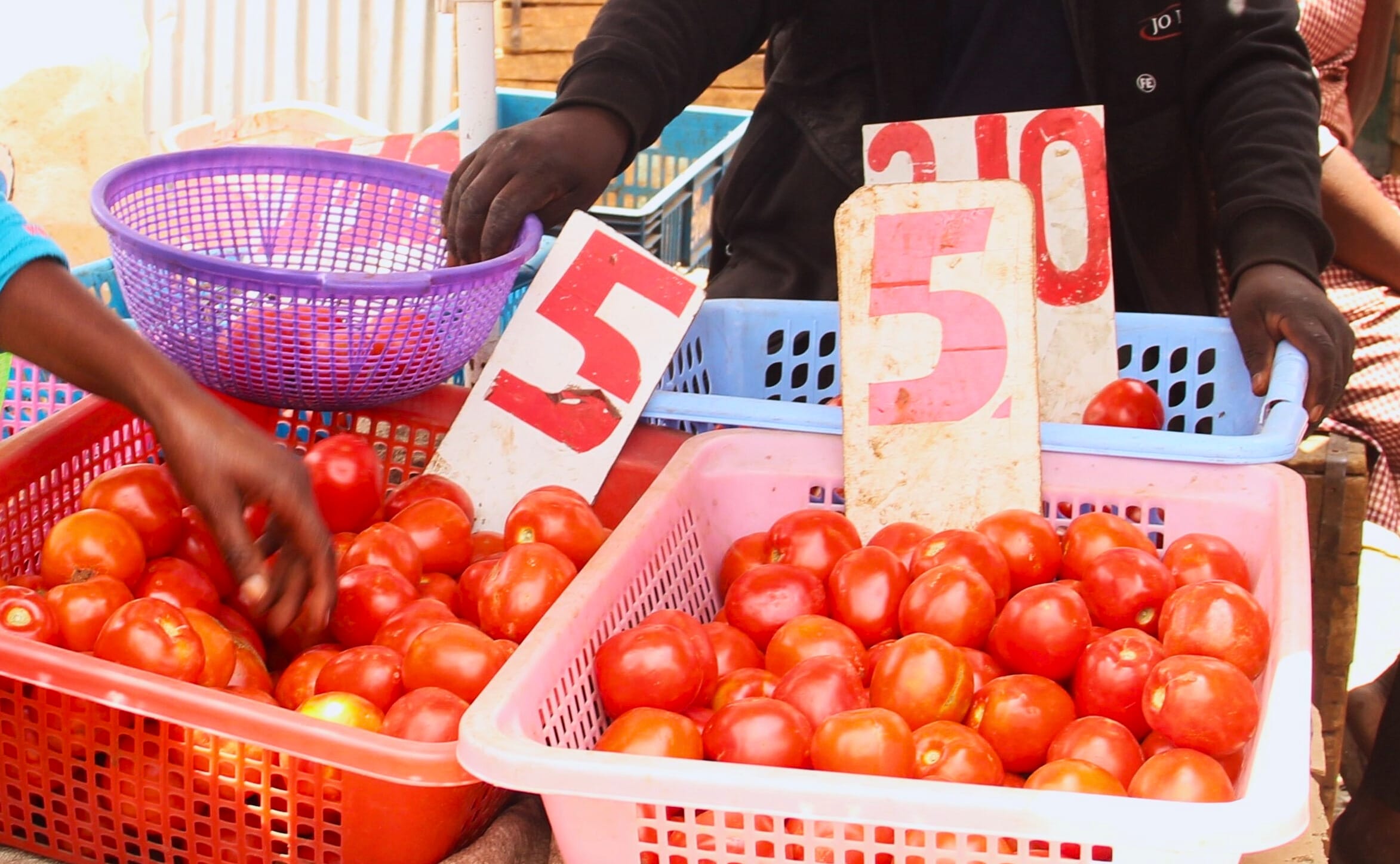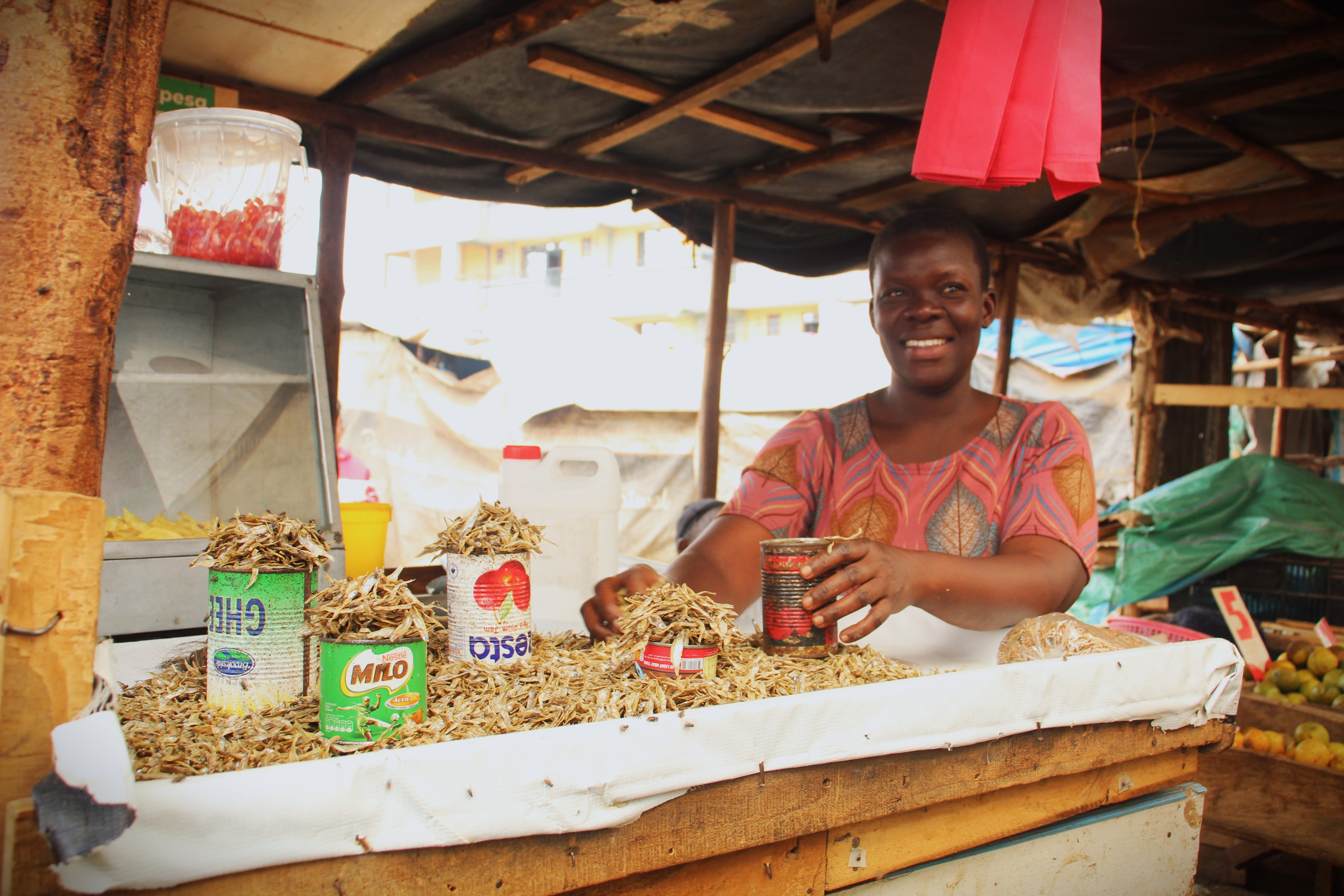Land rights are a tool for justice in carbon markets
Explore how carbon credit projects threaten people's land rights, as well as concrete policy pathways to reverse this alarming trend to achieve climate justice.
by Joanna Trimble | 2025-05-29

Woman farms her plot of land. Photo credit: Annie Platt
Our latest publication – Net Zero and Land Rights: how our climate goals drive land demand and shape people’s lives – is hot off the press.
On 22 May, alongside our partner, the Robert Bosch Stiftung, an inspired audience joined us for the publication’s official launch. Riveting discussions emerged on what our climate goals and their implementation through carbon markets actually mean for the people that live on and from the land.
The key solution that surfaced? For the long arc of climate justice to truly tip towards people, land rights must be solidly anchored in climate policy to ensure it bends in their favour.
This publication reveals why, and we’ve created a dedicated website to easily peruse the chapters, download shareable graphics, and explore a variety of additional resources on the topic.
Explore NetZeroLandRights.com
Below, we offer a reflection on the themes explored in the publication—inviting you to consider what’s at stake when land is treated as an asset, rather than a living foundation for people and ecosystems.
As global actors set their sights on land as a beaming solution to climate change, a concerning trend is emerging. One that challenges us to consider if a just transition can emerge from frameworks that do not explicitly acknowledge people’s interdependence with, and rights to, land.
Based on current estimates, national climate pledges require approximately 1 billion hectares of land for carbon removal by 2060—nearly the size of China or the United States. Land-based carbon removal strategies—like afforestation and reforestation—have become commonplace approaches to mitigate the impacts of climate change. Many of these strategies are commodified through carbon markets.
Yet, carbon markets pose an extraordinary challenge to our pursuit of climate justice and a just transition. Carbon markets can incentivise large-scale land acquisitions for land-based carbon offset projects, often at the expense of local communities and ecosystems.
Land-based projects in voluntary carbon markets now cover nearly 24 million hectares globally—roughly the total land size of the United Kingdom or Uganda—comparable to the controversial land rush of the 2000s. High-income, high-emitting countries like Australia, Canada, Saudi Arabia, Russia, the United Kingdom and United States have pledged vast amounts of land for carbon sequestration to reach net zero, often outside their own borders, effectively shifting the burden to other countries. The anticipated land-use changes necessitated by these commitments can significantly reshape landscapes; Vast tracts of farmlands could be converted into monoculture forests or bioenergy plantations—placing food systems, biodiversity, and local communities at risk.
Yet, even as this publication examines the harmful impacts of carbon offset projects on communities—it does not critique or dismiss our shared, genuine ambition to behold the power of nature to locate meaningful solutions. Climate strategies and carbon dioxide removal—if implemented equitably—remain vital tools to meet the goals of the Paris Agreement.
The problem is our approach.
Many of these projects frequently bypass free, prior and informed consent and are concentrated in regions where land tenure systems are largely customary and unregistered. Communities likewise often receive minimal benefits—if any.
For example, the Forest Neutral Congo–Total Energies project in the Republic of the Congo planned a 40,000-hectare acacia plantation, sparking local resistance due to inadequate consultation and concerns over land rights and resource access. Without secure land tenure, there is a danger in large-scale tree-planting projects encroaching on community lands and rights under the banner of carbon offsetting.
In Niger, only 4.5 per cent of adults hold formal land titles. This number pales in comparison to roughly 80 per cent of the population dependent on agriculture and land-based activities for their livelihoods. This underscores communities’ exceptional vulnerability to displacement from land-based carbon offsets.
Meanwhile, Indigenous Peoples and local communities manage over 50 per cent of the world’s intact forests but control only a fraction of that land legally. Yet, land tenure and ecological knowledge are proven drivers of biodiversity and climate protection.
This begs the fundamental questions: whose contribution counts in the race to net zero? And how should the very definition of climate action and a just transition—and the pursuits that arise as their extension—evolve to fully recognise and protect communities’ rights to land?
We pose these questions just weeks before climate negotiators reconvene in Bonn in June at the UN Climate Change Conference under the United Nations Framework Convention on Climate Change, known as SB62. There, governments are expected to make further progress on the implementation of Article 6 of the Paris Agreement, which governs international carbon markets.
Our message ahead of this event is clear: we must urgently integrate land rights as the foundation of climate action for it to truly be just. This also means aligning on shared standards that advance climate justice, such as free, prior, and informed consent; participatory mapping and land-use planning; transparent and ensured benefit-sharing; and effective grievance and accountability mechanisms.
Importantly—and to echo expert warnings—carbon dioxide removal is a component of climate mitigation: our over-dependence on land-intensive solutions must not be a diversion from the urgent need to decarbonise energy systems and reduce fossil fuel consumption. To that end, carbon markets cannot allow high emitters to buy their way towards carbon neutrality without transforming their economies or business models—and worse, evade responsibility by shifting the burden onto communities.
This publication is both an urgent call to action and a plea for reform to be designed to promote equity alongside environmental sustainability, and to treat local communities as true partners—not casualties—in climate solutions.
Explore NetZeroLandRights.com
 Urban Food FuturesSep 29, 2025
Urban Food FuturesSep 29, 2025Cheaper food, higher costs: The paradox of Nairobi’s food systems
What are the hidden costs of foods sold in Nairobi's informal markets, and who must bear them? We discuss how the city could build food systems that are both affordable and fair—for consumers and the people who feed them.
Christian Sonntag, Emmanuel Atamba, Lumi Youm
 Land GovernanceJun 26, 2025
Land GovernanceJun 26, 2025Did 2024 - the year of the triple COP - change anything for land rights?
What did this “triple COP” moment really deliver for land rights? Can we keep the momentum up to advance gains made and push for bolder action?
Frederike Klümper
 Urban Food FuturesJun 20, 2025
Urban Food FuturesJun 20, 2025Working with informality: A hidden path to Zero Hunger
Global progress on Zero Hunger is faltering, but a powerful, overlooked solution exists: working with informality. Supporting the networks already feeding cities and sustaining communities can drive progress not only on hunger, but across multiple SDGs.
Jes Weigelt

